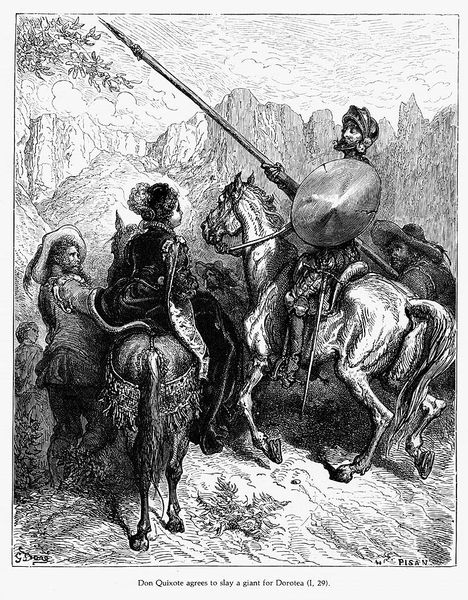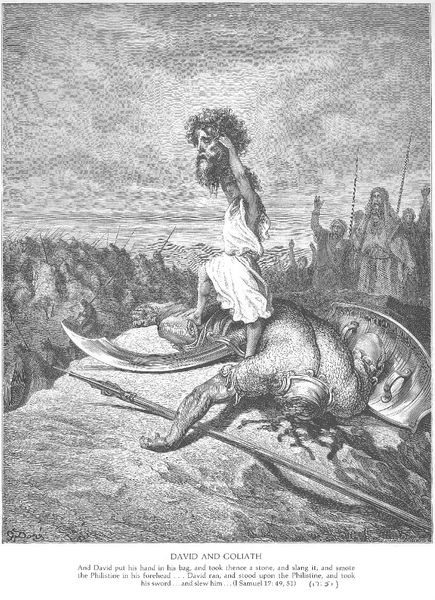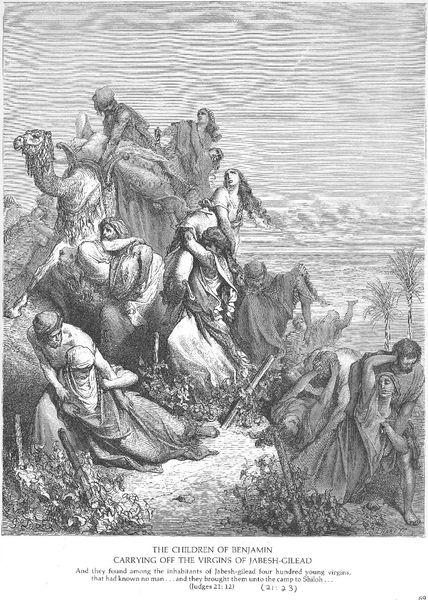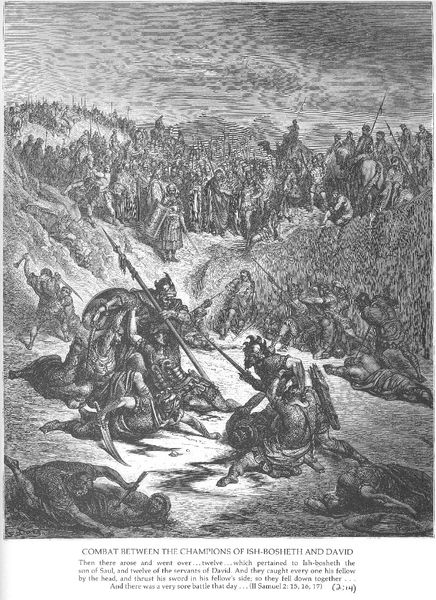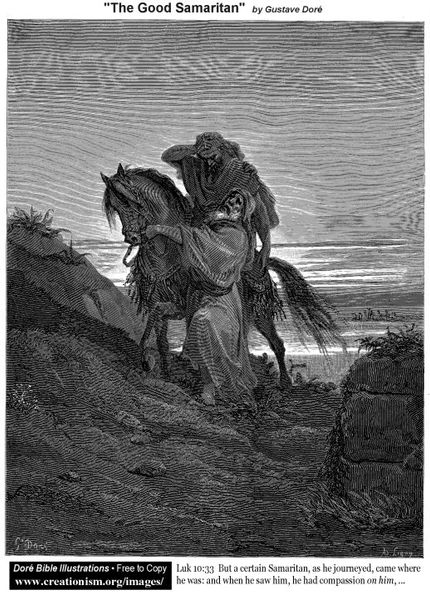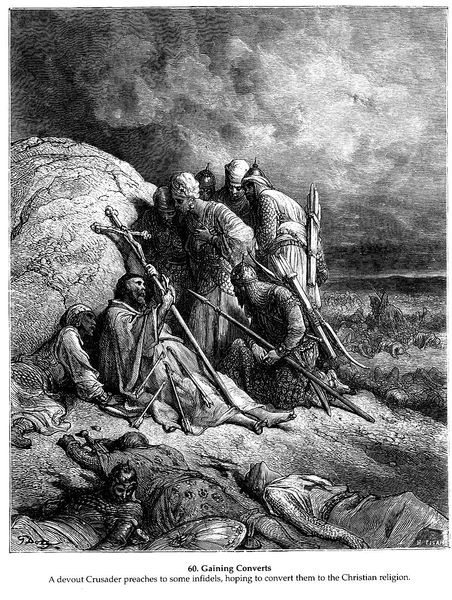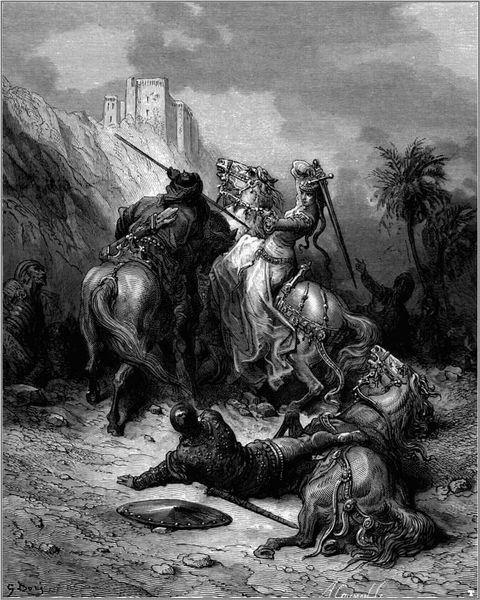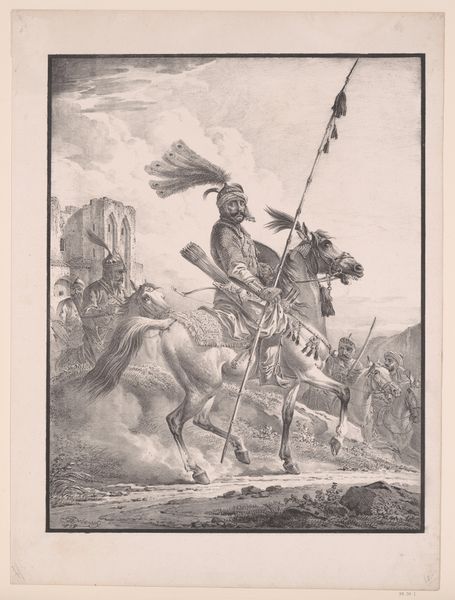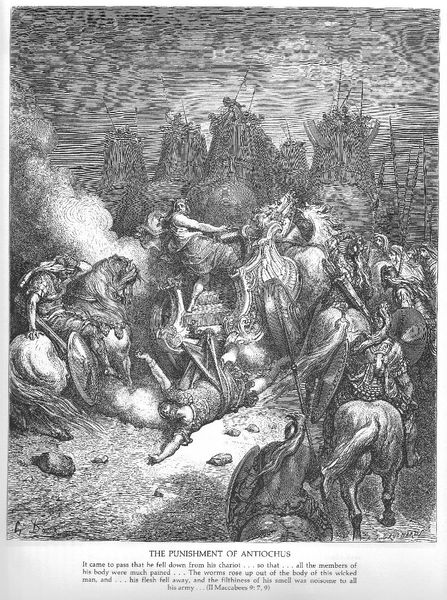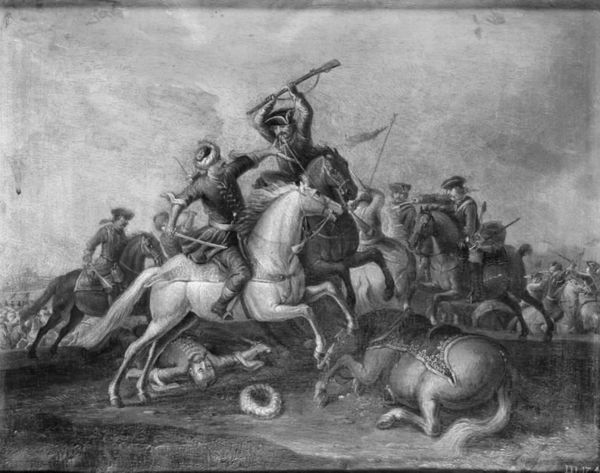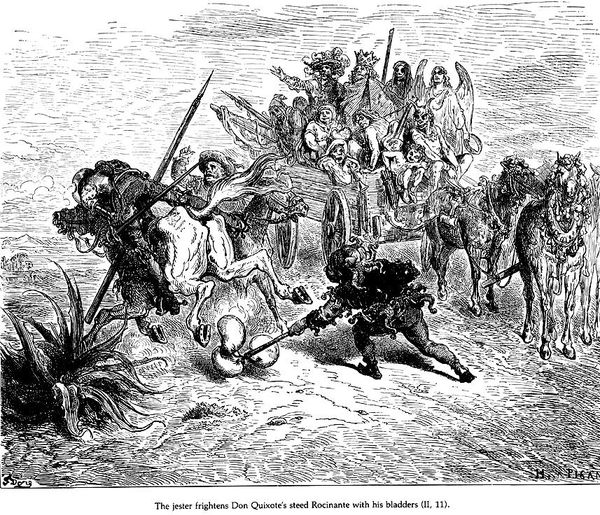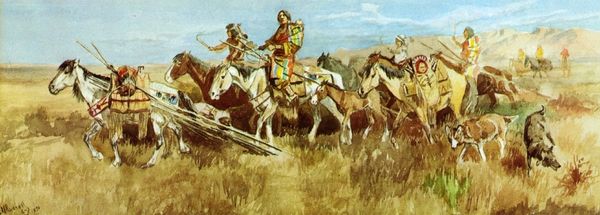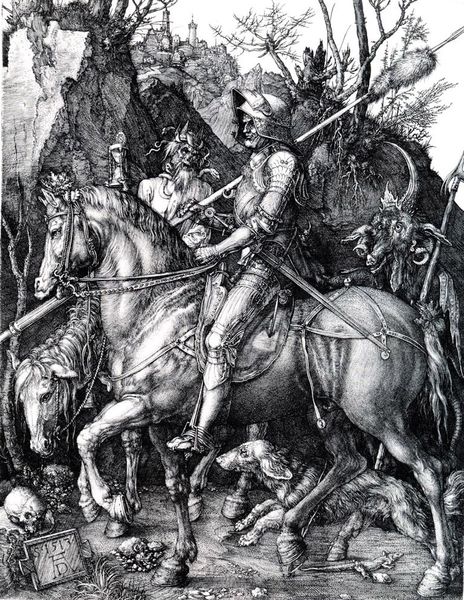
Don Quixote and Sancho Setting Out 1863
0:00
0:00
gustavedore
Kharbine-Tapabor Collection, Paris, France
Copyright: Public domain
Curator: Gustave Doré's "Don Quixote and Sancho Setting Out," created in 1863, offers a glimpse into Cervantes' iconic narrative. What strikes you initially about this drawing? Editor: The overwhelming sense of foreboding, despite the clear day! The stark monochrome palette and the figures silhouetted against the light suggest a journey into the unknown, fraught with difficulty. Curator: Doré’s skill with engraving brings a romantic, even dramatic flair to the story. The landscape itself reflects their inner state, a kind of romantic projection onto the world. Consider the social commentary embedded here – the critique of aristocracy through the lens of delusion. Don Quixote's adventures challenge the status quo, pushing against rigid social structures. Editor: Absolutely. I see the symbolic weight in their contrasting mounts – Don Quixote's noble steed versus Sancho's humble donkey. The elevated spear, of course, is a universal symbol of purpose and challenge. It hints at ambition but also the potential for misplaced aggression. Are we to take it that these men are ready to strike, and at what? Curator: Right – their interaction also speaks to class differences and the dynamic of power within the story. Sancho, in his folksy attire, almost grounds Quixote. But is Sancho really so pragmatic as to be aware that he is going off with a madman? His very own presence normalizes Quixote's mental disturbance. Is there an enabling effect happening there? What is Sancho seeking in his involvement with Quixote? Editor: That makes me consider ideas of dependency too, both practical and psychological. Sancho gains some kind of access to a higher realm than the one in which he normally exists. I am also caught up in the way Doré emphasizes the horses’ musculature. We know very well what horses meant throughout European history – so how can we interpret them, as agents or objects of destiny? Curator: These details reveal Doré’s sensitivity to the power dynamics, the material conditions that underpin their adventure. By presenting them this way, Doré highlights not just individual folly but also the structures that perpetuate inequality and delusion. Editor: Considering the broader historical moment – the revolutions of 1848, the rise of industrialization – the artwork perhaps carries an additional layer of meaning, pointing to individual action within society as a form of freedom and resistance. A means of protest. It’s intriguing to explore Doré's engagement with this narrative. Curator: For me too, examining Doré's depiction helps us explore how cultural narratives are constructed and circulated, shaping our perceptions of class, gender, and power. Thank you for expanding that idea!
Comments
No comments
Be the first to comment and join the conversation on the ultimate creative platform.
